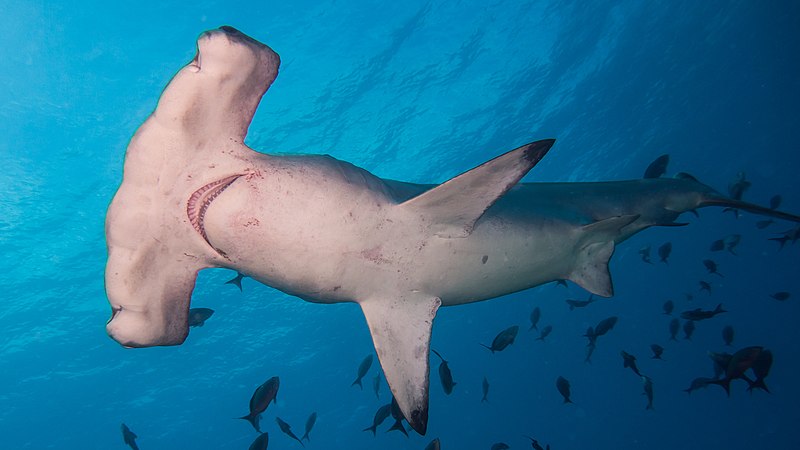Hello ladies and gents this is the Viking telling you that today we are talking about my favourite shark
THE HAMMERHEAD SHARK
The hammerhead sharks are a group of sharks that form the family Sphyrnidae, so named for the unusual and distinctive structure of their heads, which are flattened and laterally extended into a "hammer" shape called a cephalofoil. Most hammerhead species are placed in the genus Sphyrna, while the winghead shark is placed in its own genus, Eusphyra.
Many, but not necessarily mutually exclusive, functions have been postulated for the cephalofoil, including sensory reception, manoeuvering, and prey manipulation. Hammerheads are found worldwide in warmer waters along coastlines and continental shelves. Unlike most sharks, some hammerhead species usually swim in schools during the day, becoming solitary hunters at night. Some of these schools can be found near Malpelo Island in Colombia, the Galápagos Islands in Ecuador, Cocos Island off Costa Rica, near Molokai in Hawaii, and off southern and eastern Africa.
Description
The known species range from 0.9 to 6.0 metres (2 feet 11 inches to 19 feet 8 inches) in length and weigh from 3 to 580 kilograms (6.6 to 1,278.7 pounds). They are usually light gray and have a greenish tint. Their bellies are white, which allows them to blend into the ocean when viewed from the bottom and sneak up on their prey. Their heads have lateral projections which give them a hammer-like shape.
Hammerheads have disproportionately small mouths compared to other shark species. They are also known to form schools during the day, sometimes in groups over 100. In the evening, like other sharks, they become solitary hunters. National Geographic explains that hammerheads can be found in warm tropical waters, but during the summer, they participate in a mass migration to search for cooler waters.

Comments
Post a Comment